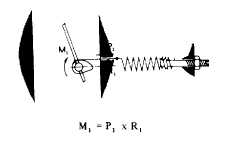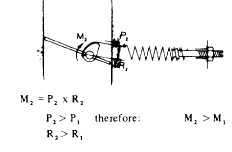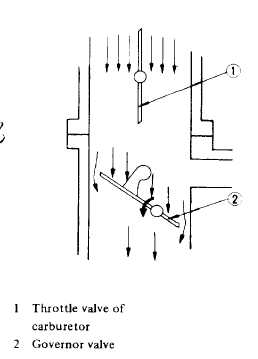| |
TM 10-3930-653-14&P
Fig. 4-123. Condition under Full
Opening of Valve
Fig. 4-124. Condition under Total
Closure of Valve
(2)
Force to close the valve produced by the pressure
difference between both sides of it.
This force acts more strongly when the throttle axle
of the carburetor is wide open and the engine is
operating at high speed. The rotation axis of the
governor valve is shifted from the center of the valve in
such a direction that the negative pressure suction will
tend to close the valve. When the revolution of the
engine increases with the throttle valve of the carburetor
wide open, the pressure difference between both sides
of the governor valve increases with a resultant increase
in the force which tends to close the valve.
This force sharply increases when the governor
valve approaches its closed position, but at the same
time, the counteraction to open the valve exerted by the
cam and cam spring also rapidly increases, bringing
about a balance between these two forces. If the cam
and cam spring are adjusted improperly, good balance
is destroyed and causes such problems as overrun,
engine stall, or hunting: ("Hunting" means sudden
fluctuation of engine speed accompanied with vibration).
Fig. 4-125.
(3)
Force to close the valve due to the stabilizer.
This force is more strongly exerted when the throttle
valve of the carburetor is opened comparatively a little,
and the engine is rotating at a high speed. When the
opening of the throttle valve of the carburetor is relatively
small, the volume of air suction is small and the pressure
difference between both sides of the governor valve
does not increase in spite of high revolution of the
engine, disabling the valve to close. The stabilizer is
provided to compensate for this action.
The smaller the opening of the throttle valve of the
carburetor and the higher the revolution of the engine,
the larger the negative pressure suction becomes and
the stronger the sucking force becomes on the stabilizer
piston Therefore, the force of the piston overcomes the
combined force of the cam and cam spring and moves
the governor valve towards the closing direction. The
stabilizer piston, at the same time, serves to prevent
hunting, because it always pushes the valve due to the
force exerted by sucking action of negative pressure.
4-74
|





